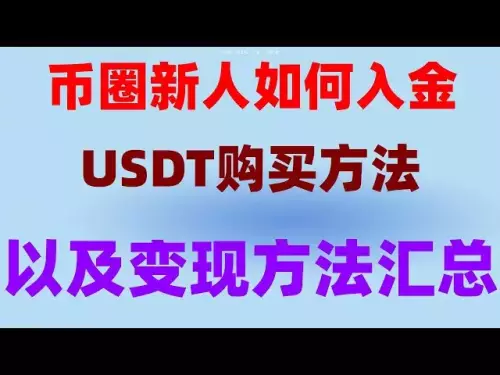 |
|
 |
|
 |
|
 |
|
 |
|
 |
|
 |
|
 |
|
 |
|
 |
|
 |
|
 |
|
 |
|
 |
|
 |
|
Cryptocurrency News Articles
Stablecoins, DeFi, and Financial Autonomy: Navigating the Decentralized Revolution
Aug 26, 2025 at 03:24 am
Exploring the rise of stablecoins, decentralized finance, and financial autonomy, focusing on key trends, investment opportunities, and the evolving regulatory landscape.

The convergence of stablecoins, decentralized finance (DeFi), and financial autonomy is reshaping the financial landscape. Stablecoins are emerging as a cornerstone, driving innovation and offering new opportunities for investors and individuals alike. Let’s dive into the key trends, insights, and potential pathways this revolution is paving.
The Rise of Stablecoins and DeFi
Stablecoins have rapidly evolved from a niche crypto asset to a fundamental component of the DeFi ecosystem. By 2025, stablecoins—pegged to fiat currencies like the U.S. dollar—stabilize the crypto market and supplant traditional banking tools. The market capitalization is at $250 billion and projections indicate it will reach $2 trillion by 2028. This growth redefines liquidity management, transaction execution, and access to yield-generating opportunities.
Why Stablecoins Outperform Traditional Tools
Stablecoins offer a compelling alternative to legacy systems by addressing their inherent inefficiencies. Traditional credit cards, for instance, incur fees of up to 4% per transaction in the U.S., ultimately borne by consumers. Stablecoin transactions on blockchains like Ethereum and Solana cost fractions of a cent, with settlement times measured in seconds rather than days. JPMorgan's JPM Coin facilitates $1 billion in daily institutional transactions, while Tether's USDT dominates remittance corridors in emerging markets.
Stablecoins democratize access to financial services, enabling peer-to-peer payments, smart contracts, and yield-bearing accounts without needing a traditional bank account. Platforms like PayPal and SAP integrate stablecoins into their systems, reducing reliance on card networks and streamlining cash flow. Individuals gain greater control over their financial data and earn real-time returns on holdings, such as the 4.1% annual yield on USDC via Coinbase.
Infrastructure as the New Investment Frontier
The growth of stablecoins is underpinned by robust infrastructure developments, creating fertile ground for strategic investments. Key areas include:
- Blockchain Networks and Scaling Solutions: Ethereum, Solana, and Avalanche enhance scalability through Layer 2 solutions like Arbitrum and Optimism, reducing congestion and fees.
- Institutional-Grade Custody and Wallets: Security remains a top priority, with protocols offering multiparty computation (MPC) and hardware-based key management—such as BitGo and Fireblocks—becoming essential infrastructure.
- DeFi Lending and Yield Platforms: Stablecoins are the lifeblood of DeFi, with platforms like Aave and Compound holding $79 billion in collateral. Innovations such as Ethena's USDe attract institutional liquidity.
- Regulatory-Compliant Stablecoin Issuers: Circle's USDC and Société Générale's EURCV exemplify the shift toward regulated, asset-backed stablecoins, supported by the U.S. GENIUS Act and EU’s MiCA framework.
Strategic Investment Opportunities
Investors seeking exposure to the stablecoin revolution can consider:
- Blockchain Infrastructure Providers: Companies like Solana and Ethereum-based Layer 2s (e.g., Arbitrum) are foundational to the stablecoin ecosystem.
- DeFi Protocols with Strong Liquidity: Aave and Compound continue to dominate stablecoin lending, while newer entrants like Ethena innovate with hybrid yield models.
- Regulatory-Compliant Stablecoin Issuers: Circle and BlackRock's USD Institutional Digital Liquidity Fund align with regulatory frameworks, offering a clear path to sustained adoption.
- Cross-Chain Bridges and Interoperability Tools: Bridges like Wormhole and Multichain are critical for maintaining liquidity and accessibility as stablecoins migrate across blockchains.
The Trump Family's Crypto Influence
The Trump family's foray into cryptocurrency is a calculated political and economic strategy, reshaping the U.S. digital asset landscape. Their holdings in DeFi platforms like World Liberty Financial (WLF) and the $TRUMP meme coin demonstrate their ability to leverage brand power. The administration's pro-crypto agenda, including the rescission of the IRS’s “broker rule” and the passage of the GENIUS Act, has further reduced compliance burdens for DeFi platforms and stablecoin issuers.
While executive orders in the U.S. are inherently vulnerable to change, the administration's actions have accelerated the mainstreaming of digital assets. Crypto is increasingly seen as a legitimate alternative to traditional stores of value, reflecting a broader ideological shift toward decentralized systems.
Risks and Mitigation Strategies
Investors must remain vigilant. Risks include regulatory shifts, de-pegging events, and cybersecurity vulnerabilities. Mitigation strategies include:
- Diversification: Allocating across multiple stablecoin issuers and protocols to reduce exposure to single-point failures.
- Due Diligence: Prioritizing platforms with transparent reserve audits and robust compliance frameworks.
- Hedging: Using yield-bearing stablecoins to offset potential losses from volatility in other assets.
DeFi Trends in 2025
Entering 2025, the world of DeFi continues to evolve with increasingly bold and relevant innovations. Key trends include:
- Omnichain DeFi: Massive adoption is expected, solving liquidity fragmentation issues and delivering more efficient pricing and deeper liquidity.
- Accelerating Institutional Adoption: Improved on-chain tools support compliance, wallet management, and reporting, allowing institutions to interact with on-chain protocols with more confidence.
- The Rise of DeFi Derivatives: The DeFi ecosystem is venturing into new blockchains and supporting a wider array of assets, including leveraged prediction markets.
- Greater Focus on User Experience: DeFi projects are focusing on simple, intuitive, and accessible interfaces to capture market share and TVL.
- AI-Powered DeFi Solutions: A surge in the use of AI in DeFi, particularly in the form of automated trading bots, risk analysis tools, and predictive analytics, is expected.
Conclusion
Stablecoins are more than a technological innovation—they are a catalyst for reimagining financial autonomy. By replacing high-cost, intermediary-dependent systems with transparent, programmable alternatives, they empower individuals and institutions to take control of their financial destinies. The key lies in identifying resilient infrastructure protocols and platforms positioned to scale with the explosive growth of the stablecoin market.
So, buckle up, folks! The future of finance is here, and it's decentralized, stable, and ready to roll. It’s like we’re all getting a financial upgrade—time to enjoy the ride!
Disclaimer:info@kdj.com
The information provided is not trading advice. kdj.com does not assume any responsibility for any investments made based on the information provided in this article. Cryptocurrencies are highly volatile and it is highly recommended that you invest with caution after thorough research!
If you believe that the content used on this website infringes your copyright, please contact us immediately (info@kdj.com) and we will delete it promptly.





























































